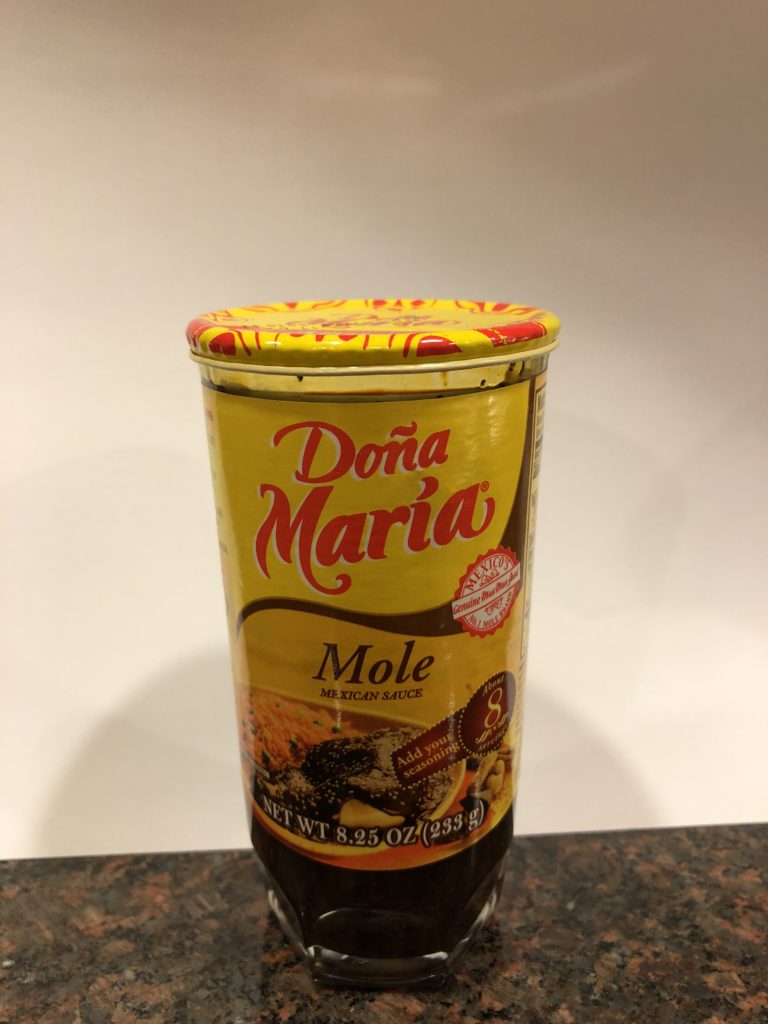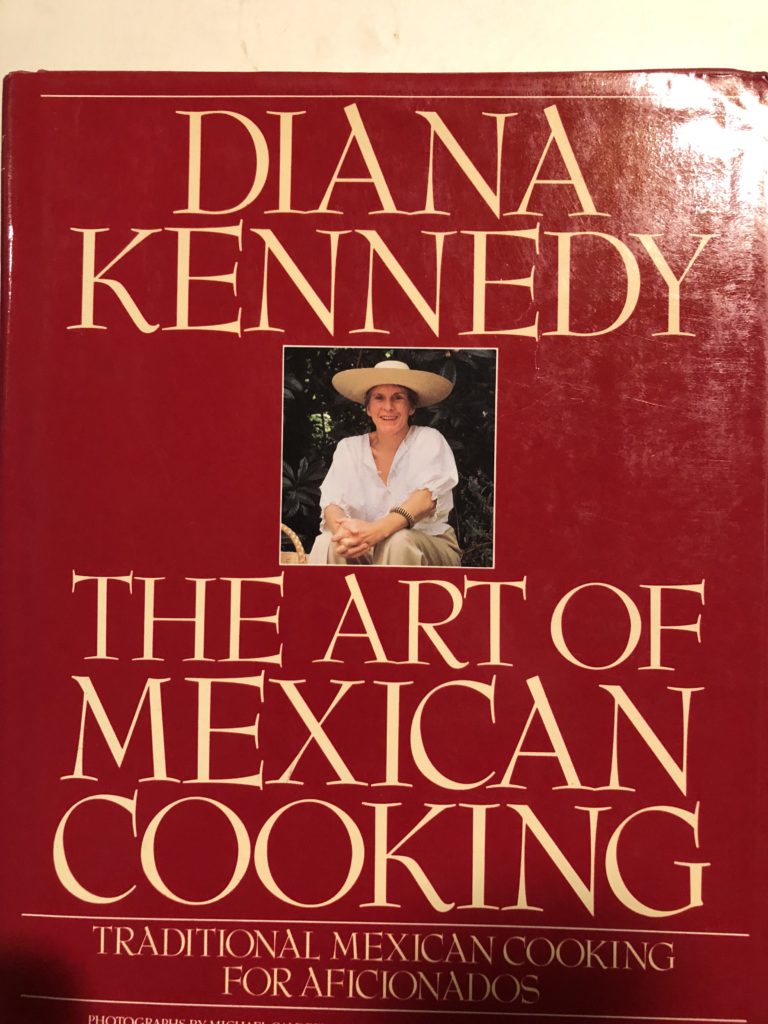Chicken mole (pronounced mo-lay) is one of our standard weeknight meals. It’s reasonably quick, courtesy of the jarred mole concentrate you can find on the Mexican aisle of well-stocked grocery stores. And it’s quite tasty.
In Mexico, moles come in a variety of colors. In the US, the standard mole found in restaurants is mole negro. The predominant ingredients are roasted dried chiles, nuts, and chocolate. You can occasionally find jarred green mole concentrate if you’re in Texas or a Mexican grocery.

Mole concentrate.
There’s a reason these jars of mole concentrate are so popular: Making mole from scratch is time-consuming and requires ingredients that you may have to hunt all over town for. Shortly before we moved to Seattle, Julian had the idea to make mole sauce for our leftover Thanksgiving turkey. The first step in a mole recipe is toasting dried chiles in a hot dry skillet. The aerosolized capsaicin nearly drove us out of the house. (After this adventure, any chile-toasting takes place outdoors on the grill.) Once all of the toasting, blending, and frying were done, we concluded that our results weren’t any better than diluting the jarred concentrate with some chicken broth.
While moles are available throughout Mexico, the epicenter of moles is the state of Oaxaca. Seven different moles are found here, according to Diana Kennedy: Negro (black); colorado (red); amarillo (yellow); verde (green); coloradito (little colored); chichlo (also black); and mancha manteles (translated as tablecloth stainer, deep red). Should you want to try your hand at making your own, Kennedy’s The Art of Mexican Cooking contains several recipes. Be forewarned that often the authentic chiles used in Oaxaca aren’t readily available on this side of the border. However, making mole is an interesting project. Just don’t toast the chiles indoors unless you have a real exhaust fan over your range.

Diana Kennedy is La Señora Grande de cocina Mexicana. I don’t think she’d approve of the jarred mole concentrate.

Recent Comments